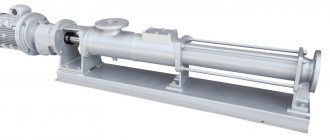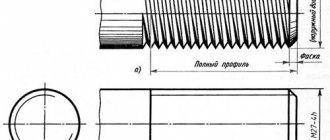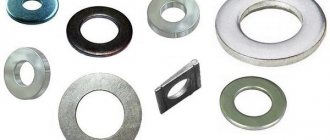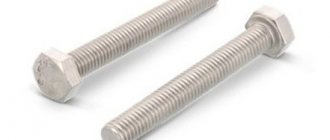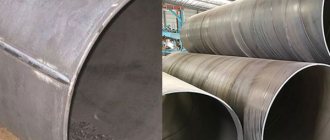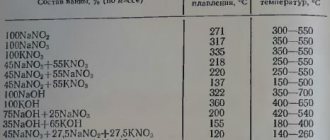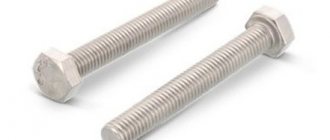High strength bolts are fastening elements with high durability. They differ in that they are made of a special grade of metal (low-alloy and alloy steel) using modern specific technology. The material used contains carbon up to 0.4 percent. Bolts are made using regular cold or hot heading, followed by subsequent thread rolling and heat treatment, in which the high-strength element is coated with a specific protective layer of up to 50 microns. Also, the coating may not be used. All components of the product must be extremely reliable and resistant to high loads. Fastening thanks to high-strength bolts is considered shear-resistant.
Operation of bolts of this type are widely used in connecting detailed elements in the mechanical engineering industry, in agriculture, and in the formation of railway fastenings. This type of fastening element is used where the traditional simple fastening method is not able to withstand heavy loads. They are used in fastening serious structures in construction, for example, the construction of a bridge. High-strength bolts are essential elements in the engineering industry and construction.
High-strength bolts do not require drilling and cleaning of the hole, which requires a hole 3 millimeters larger in diameter. The joining surface can be cleaned in three ways: fire, sand jet, cleaning with a steel brush. A cleaned surface may cause rust to form. For this reason, an important condition is the assembly of a variety of connections on high-strength bolts, which are produced in accordance with GOST, while allocating a small amount of time during the precise and timely processing of the surface layer and also securing the bolt.
An important factor is the phased installation of bolts of the maximum strength class. They begin to install them from the middle of the joint, smoothly moving to the outskirts. Thanks to the plug fixed in the hole before fixing the bolt, it becomes possible to control a list of indicators: the geometric dimension of the future structure, the accuracy of its assembly. Before installing high-strength hardware according to GOST 22356-77, you need to clean it and turn the nut, or rather along the thread of the bolt.
It is strictly prohibited to lubricate the cutting of the product. The lubricant mixture may enter the shear cavity. It is allowed to add a minimum of lubricant to the nut thread before screwing it onto the bolt. The use of pneumatic impact wrenches makes it quicker and easier to install and tighten a durable bolt. By using a torque wrench, you can control the installation of a high strength bolt.
When installing a bolt of a high strength class, its tension is fixed and monitored. The tension of high-strength bolts is assessed in two ways:
1. The first option is to mark one of the edges of the nut and unscrew it one-sixth of a turn. Subsequently, the nut is tightened using a torque wrench, and if suddenly it shows the calculation torque at the previous position, it means that the bolt was tightened correctly.
2. The second option is to put the nut on the wrench and tighten it. A high-strength bolt is tightened to values no less than the calculated ones when the indicator shows the corresponding calculations before turning the nut. After checking, the bolt heads need to be painted.
Bolt strength classes and markings - table
The strength class of a bolt is a technical and operational characteristic that reflects the maximum load on a metal product when fastening parts, shows resistance to deformation, impact and rupture.
Strength classes reflect the maximum load when fastening parts.
According to GOST 1759.4-87 (ISO 898.1-78), hardware is divided into 11 groups: 3.6; 4.6; 4.8; 5.6; 5.8; 6.6; 6.8; 8.8; 9.8; 10.9; 12.9.
The higher the value, the greater the force the fastener can withstand, the stronger and more durable it is.
Categories from 3.6 to 6.8 include bolts intended for use in lightweight structures, 8.8-12.9 are highly reliable.
The mechanical properties of fasteners depending on the strength indicator are presented in the table below:
| Strength class | Nominal tensile strength, N/mm² | Vickers hardness (min/max), HV | Yield strength (min/max), MPa |
| 3.6 | 300 | 95/250 | 180/190 |
| 4.6 | 400 | 120/250 | 240 |
| 4.8 | 400 | 130/250 | 320/340 |
| 5.6 | 500 | 155/250 | 300 |
| 5.8 | 500 | 160/250 | 400/420 |
| 6.6 | 600 | 190/250 | 360/480 |
| 6.8 | 600 | 190/250 | 640 |
| 8.8 | 800 | 250/335 | 640/660 |
| 9.8 | 900 | 290/360 | 720 |
| 10.9 | 1000 | 320/380 | 900/940 |
| 12.9 | 1200 | 385/435 | 1080/1100 |
What is put on the bolt head?
There is a marking on a standard bolt made according to GOST 7798-70.
It includes:
- Strength class. Determines the degree of load and scope of application.
- Manufacturer's mark. Allows you to identify a company engaged in the production of hardware.
- Arrow. Indicates left-handed threads.
Standard location of markings on bolts
Designations are applied to the top of the head. They are convex and recessed. The geometry is determined by the manufacturer.
On bolts and screws with a diameter of more than 6 mm, marking is required. Smaller fasteners do not have a number.
A standard bolt is marked with a strength class.
On parts of small size or non-standard shape, symbols from the dial system are used.
Interpretation of signs on stainless metal bolts:
- Designation of austenitic steel grade:
- A2 – resistance to water;
- A4 – resistance to salts, alkalis, acids.
- The strength limit is 50, 60, 80, which corresponds to 500, 600, 800 MPa and classes 5.6(8), 6.6(8), 8.8.
Possibly a factory mark.
Products made from a martensitic alloy are marked similarly to carbon alloys, with the numbers at the bottom underlined. The standard allows not to put a period in the designation.
In BVP, signs are indicated in accordance with GOST 52644-2006.
As an example: D 11.14 8.8 S HL, where:
- D – manufacturer identifier;
- 11.14 – heat number;
- 8.8 – strength limit;
- S – bolt with a 6-sided enlarged head;
- “HL” – climatic version (cold region).
Products made of martensitic alloy have a factory mark.
Symbols are applied to studs if the thread diameter exceeds 12 mm.
Requirements according to GOST
Hardware must comply with the dimensions, mechanical properties, accuracy class, quality standards prescribed in GOST standards, and be free from major defects and traces of corrosion.
On drawings and specifications, engineers mark bolts strictly according to the standard.
Preparation for use
In practice, no one prepares high-strength bolts for use on a construction site. Fasteners are most often delivered in factory lubricant and immediately begin to be used, thereby making a mistake. Experienced specialists have several clever tricks on how to prepare high-reading bolts for use:
Before using hardware, they must be boiled. Add washing powder or detergent to the water. This action helps get rid of grease, scale and dirt.
Then you need to carefully inspect the fasteners and remove all products with cracks and defects.
Before using the bolts, you should coat their threads with oil. In some cases, it is recommended to immerse boiled hardware in a gasoline-oil solution.
High strength fasteners are mounted using two washers. One is installed on the bolt side, and the other on the nut side.
What is yield strength and how to determine it
The yield strength σт is the critical load on a detachable connection, at which an irreversible process of destruction of the structure occurs without increasing the acting force.
The parameter is affected by temperature. As it increases, σt decreases.
There are 2 formulas to calculate the indicator:
- For temporary tensile strength: the 1st digit in the designation of the strength class is multiplied by 100, then multiplied by the 2nd digit, the result is divided by 10. So, for hardware of group 5.8 σt=400 MPa (5x100x8:10=400).
- By strength class: the 1st and 2nd digits are multiplied by each other, then by 10. For category 5.8: σt=400 MPa (5x8x10=400).
The yield strength is the critical load on a detachable joint.
The higher the yield strength, the longer the part is able to remain in a state of tension and resist dynamic and stationary forces. When selecting fasteners, a 2- or 3-fold safety factor is taken into account.
Materials
Conventionally, all steels that are used to produce high-strength threaded parts can be divided into several groups:
Separately, the coating of external surfaces with protective layers is prescribed using galvanization and thermal diffusion processes. These include:
- galvanizing;
- nickel plating;
- cadmium plating (especially relevant for offshore structures and shipbuilding).
Thus, high-strength fasteners intended for assembling aluminum structures must be exclusively galvanized or cadmium-plated. Otherwise, prolonged force contact between aluminum and steel will lead to the development of electrochemical corrosion.
Strength class and steel grade
The quality of products is affected by the carbon content in the alloy. With a decrease in the amount of substance, the reliability, hardness and strength of the part increase.
Bolts are produced:
- low strength - from St. 10, 20;
- medium - from steel up to 0.4% carbon (U4);
- high - from structural low-, medium-carbon and alloy steels with strengthening additives.
The necessary properties are achieved as a result of heat treatment (hardening) in electric furnaces. The hardened alloy has high performance characteristics.
The most common grades for the manufacture of BVP are St30KhGSA; St35; St35X; St35HGSA; St38ХА; St40X; St40X "Select"; St20G2R.
Strength of highly specialized bolts
Separate standards and requirements are provided for BVP for narrow industry purposes. Fasteners are made enlarged.
The characteristic that determines the strength of a metal is the stress corresponding to the maximum force and preceding rupture.
The group of specialized BVPs includes bridge bolts, shoe bolts, anchor bolts, railway bolts, etc.
Some of them are designed for use in difficult and extreme conditions and are marked:
- “HL” – for harsh climates with temperatures down to -60°C;
- “U” – for areas with an average cold (moderate) regime down to -40°C.
Mechanical properties are specified in GOST 22353-77, R 52644-2006, 24379.1-80.
Rules for tightening BVP
Tensioning of high-strength bolts is carried out in two stages:
- Align the holes of the parts for high-strength bolts and fix the position of the structural parts using mounting plugs.
- At the first stage, bolt fasteners are inserted and plugs are removed. Next, using wrenches, the bolt fasteners are tightened only to 50-90%. At the beginning of tensioning, the fastener head must be held from turning. If it is impossible to eliminate the scrolling, the element is replaced.
- At the second stage, fastening is carried out completely, using torque wrenches. The tension of the bolts is carried out after checking the compliance of the geometry of the entire structure with respect to standards and rules, and checking the tightness of the structure's screed.
Excellent technical characteristics of connections made with high-strength bolts ensure the strength of the entire structure. If all instructions are followed, the structure will last for many decades.
Did you manage to solve your problem using the recommendations from the article?
Yes!
46.84%
No. More answers required. I'll ask in the comments now.
37.31%
Partially. There are still questions. I'll write in the comments now.
15.85%
Voted: 713
Types of bolt fastening
Threaded connections are structurally different from each other.
Bolted
A bolt is a part equipped with a head and threads at different ends. The thread is necessary to screw on the nut. The head is picked up from the outside with a wrench.
To install hardware, holes of larger diameter are drilled on the surfaces to be joined. The end side is chamfered.
The bolted fastening is easy to replace if broken.
The disadvantage of the connection is that it requires a lot of space, which leads to an increase in the size and weight of the structure.
Advantage: easy replacement if broken.
Screw
The screw is screwed into the housing using a special end tool. The head comes in different shapes, including 6-sided. The main difference is the small installation area.
Negative point: during installation, the thread is often damaged, and it is difficult to remove part of the fastener. Therefore, screw connections are not used for repeated installation/disassembly.
Using studs
A stud is a cylindrical fastener without a head, the ends of which have threads of the same diameter. There is a tight cut on one side. The other end is needed to install the nut.
Fastening with studs is required for frequent assembly of the structure.
The element is in demand for frequent assembly/disassembly of the structure and installation in hard-to-reach places. The stud may bend and lose strength. The thread often breaks due to heavy loads.
Application area
High-strength bolted connections are designed for the installation of complex building structures that will be subject to:
- high temperature changes;
- precipitation;
- strong and frequent winds;
- contact with chemicals.
Since the dimensions of fasteners provided for by GOST vary, the scope of application of hardware is extensive:
- machines, equipment;
- agricultural machinery, mechanical engineering;
- construction of bridges, buildings;
- shipbuilding;
- industry, production.
Friction connection with high-strength bolts perfectly copes with the task of strong and reliable installation of structures subject to dynamic loads and vibrations.
This fastener is widely used in everyday life. It is ideal for renovating apartments and balconies; it will securely fasten any structures to concrete walls. Car enthusiasts cannot do without such bolts when repairing their car, especially wheel fastenings.
Connecting bolts using threads
Thread classification:
- metric;
- inch;
- cylindrical pipe;
- conical;
- rectangular;
- trapezoidal;
- persistent;
- standardized round.
Metric thread is the main type of threaded connection. Its parameters are the nominal diameter and thread pitch in millimeters, established by GOST 8724-81.
Connecting bolts using threads is reliable and technologically advanced.
Advantages:
- reliability;
- multifunctionality;
- manufacturability;
- the ability to adjust the compression force;
- availability of a wide range of products.
Disadvantage: tendency to self-unscrew.

